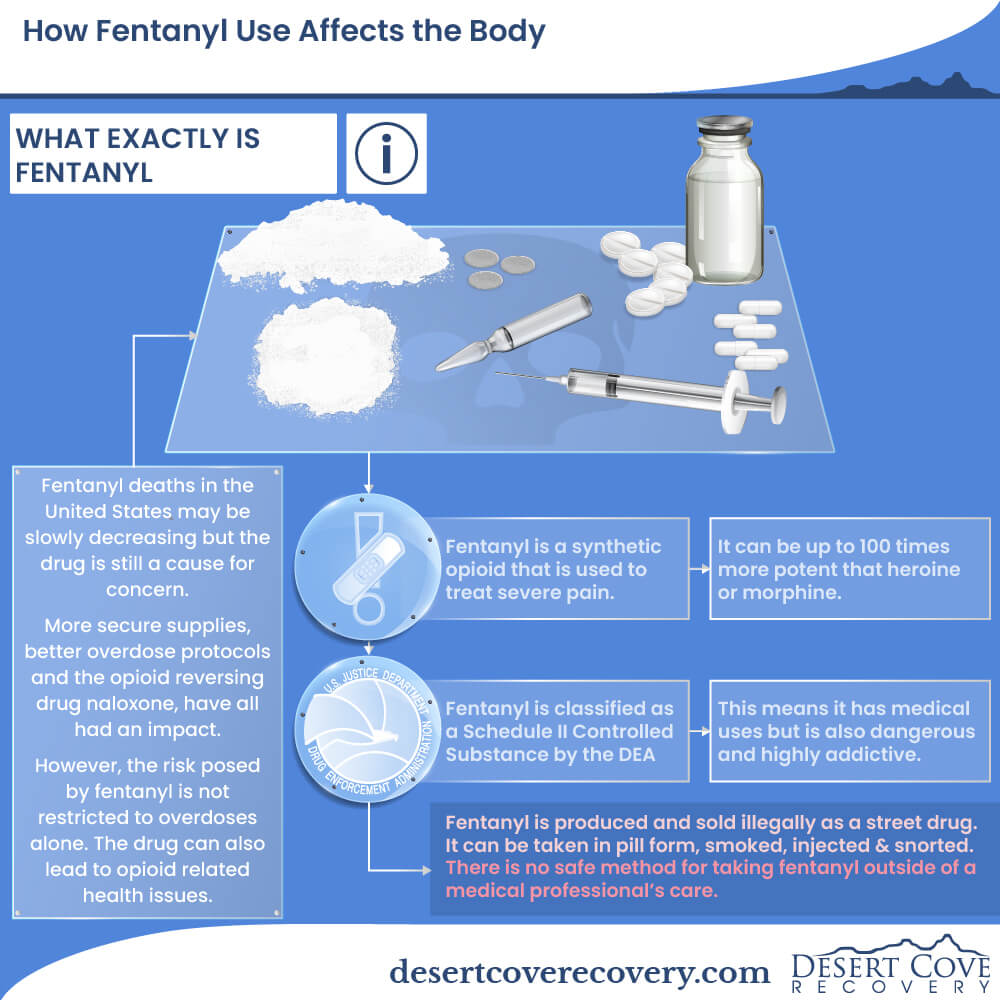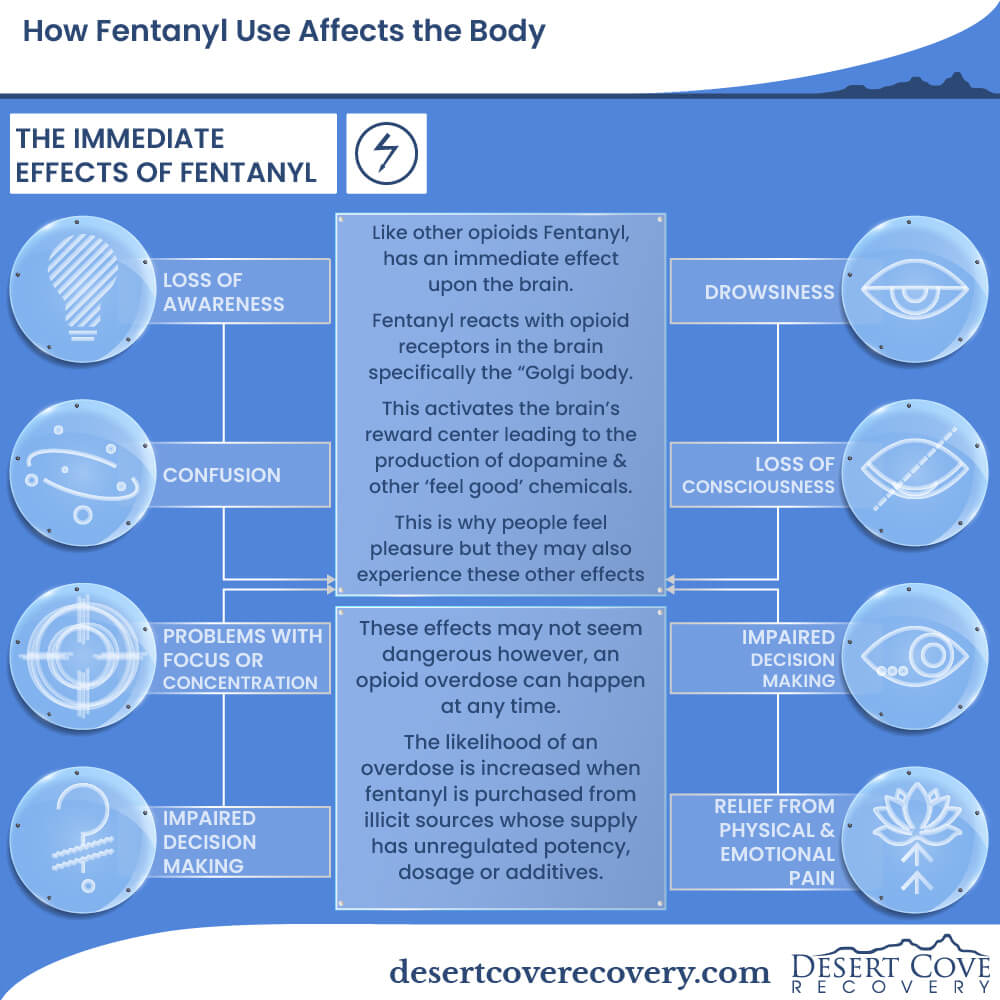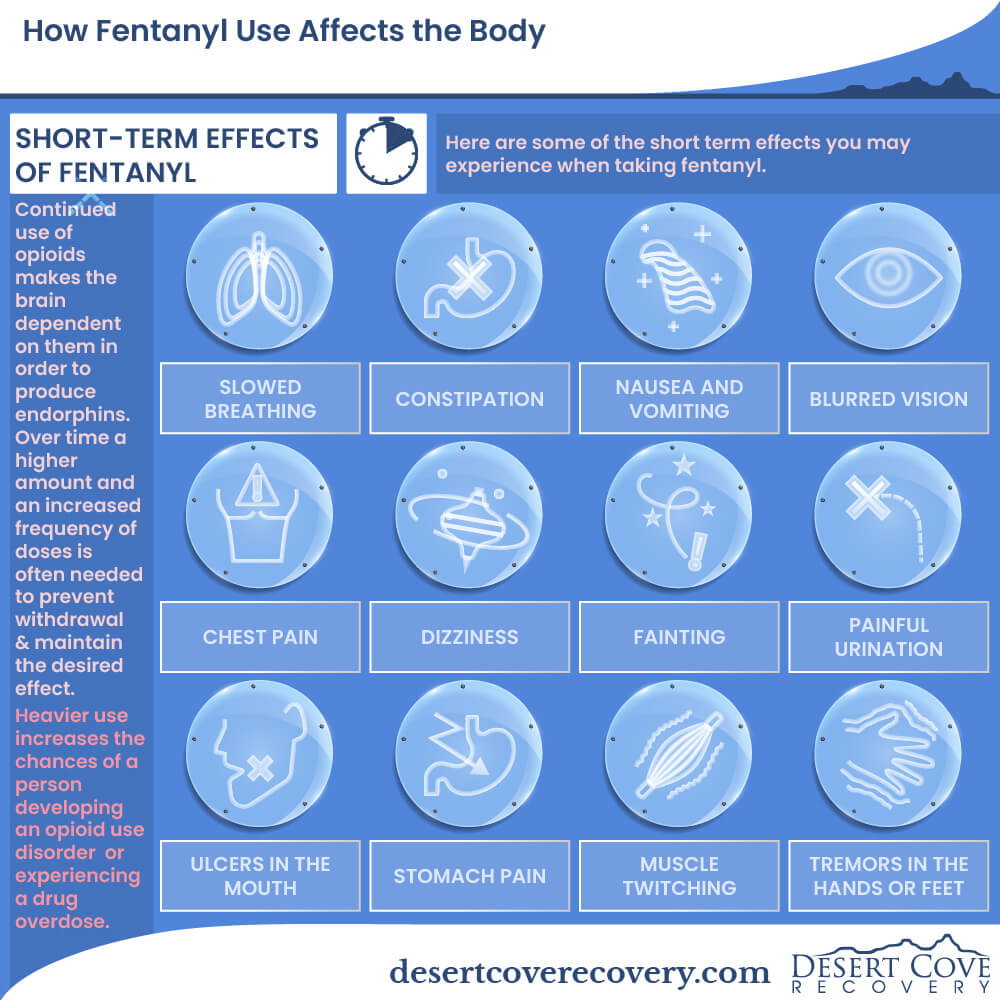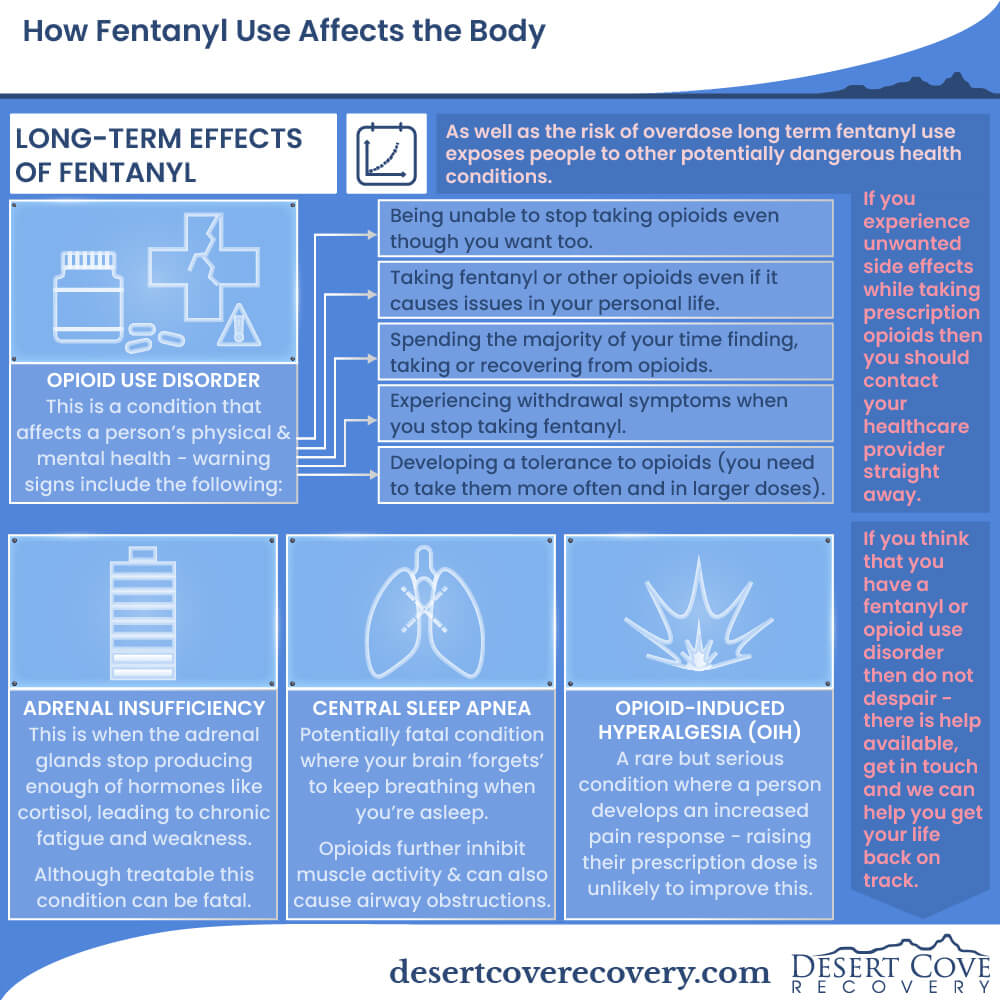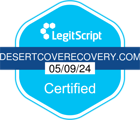It’s rare to hear good news about the opioid crisis. Still, every drug treatment center in Arizona celebrates the news that fentanyl overdose deaths are slowly decreasing in the United States.[1] There are a variety of reasons for this trend, including better overdose protocols and the wider availability of naloxone (a life-saving medication that reverses the effects of opioid overdose).
Better control over the supply of fentanyl and other opioids is also a factor. However, overdose isn’t the only risk associated with fentanyl. People who are currently using this drug and those who are seeking recovery may experience opioid-related health problems. Some may affect them for a lifetime.
A Drug Treatment Center in Arizona Explains: What Is Fentanyl?
Fentanyl is a synthetic opioid used to treat severe pain. This drug can be up to 100 times more potent than other opioids like heroin and morphine. The DEA classifies fentanyl as a Schedule II Controlled Substance, which means that it has some medical uses but is also dangerous and highly addictive.
Fentanyl is also produced and sold illegally as a street drug. Other illicit drugs may be laced with fentanyl, placing people at greater risk for opioid overdose. Someone can take the drug in pill form, smoke it, or snort it. There is no safe method for taking fentanyl outside of a medical professional’s care.
The Immediate Effects of Fentanyl
All opioids, including fentanyl, have an immediate effect on the brain. They react with opioid receptors, specifically receptors in what is known as the “Golgi body.”[2] The Golgi body is a cluster of cells that help the brain process proteins and lipid molecules. When opioids react with these receptors, they activate the brain’s reward center, prompting it to produce dopamine and other “feel-good” chemicals.
The immediate result of taking opioids is a feeling of pleasure. The person may also experience the following:
- Loss of awareness
- Confusion
- Problems focusing or concentrating
- Impaired decision-making
- Drowsiness
- Loss of consciousness
- Slowed reaction times
- Relief from physical and emotional pain
While the immediate effects may not seem dangerous, an opioid overdose could happen even on the first use. The risk of overdose increases when someone uses fentanyl they purchase on the street, as there is no government agency to regulate these drugs for dosage, potency, or potentially dangerous additives.
Short-Term Effects
With continued use, the brain becomes dependent on opioids to produce endorphins. Over time, someone who uses fentanyl may need larger and more frequent doses to avoid withdrawal symptoms and maintain the desired effects. Heavier use also increases the risk of developing an opioid use disorder and the risk of drug overdose.
Other short-term physical effects of the drug include:[3]
- Slowed breathing
- Constipation
- Nausea and vomiting
- Blurred vision
- Chest pain
- Dizziness
- Fainting
- Painful urination
- Ulcers in the mouth
- Stomach pain
- Muscle twitching
- Tremors in the hands or feet
If you experience these unwanted side effects while taking prescription opioids, contact your healthcare provider immediately.
Long-Term Effects
Dangerous long-term health effects are a risk for those living with substance use disorders. If you have concerns about these effects, consider seeking advice from a drug treatment center in Arizona. The qualified medical staff at these addiction treatment centers understand the health needs of those living with or recovering from opioid addiction.
Along with the risk of overdose, long-term opioid use carries other potential effects.
Opioid Use Disorder
Opioid use disorder (addiction) can develop even before a person becomes physically dependent on fentanyl. This disorder affects physical and mental health and many other aspects of a person’s life. Some of the warning signs include:
- Being unable to control opioid use despite the desire to do so
- Taking fentanyl or other opioids even though it causes problems in your personal or professional life
- Spending most of your time either finding, taking, or recovering from opioids
- Experiencing withdrawal symptoms when you stop taking fentanyl
- Developing a tolerance to opioids (needing more and larger doses)
If you suspect you have developed an opioid use disorder, contact a rehab center. Your chances of a full and lasting recovery are better when you receive medical and psychological support from a qualified recovery center.
Adrenal Insufficiency
Adrenal insufficiency can happen when adrenal glands fail to produce a sufficient amount of hormones, primarily cortisol. This can lead to weakness and chronic fatigue. While it is a treatable condition, opioid-related adrenal insufficiency can be fatal.[4]
Central Sleep Apnea
Chronic opioid use can lead to central sleep apnea. In this potentially deadly sleep disorder, your brain forgets to direct your muscles to keep breathing. Opioids can further inhibit muscle activity and cause airway obstructions.[5]
Opioid-Induced Hyperalgesia
Opioid-induced hyperalgesia (OIH) is a rare but serious condition that increases the natural pain response. Someone with OIH will feel pain more intently than the average person. Increasing the dose of prescription opioids or other painkillers is typically not effective for OIH; instead, it can end up making pain worse.
Find Support at the Desert Cove Recovery Drug Treatment Center in Arizona
Reclaiming your life after fentanyl addiction may seem out of reach, but outpatient programs at Desert Cove Recovery could make it possible. Our treatment programs designed specifically for fentanyl use disorder provide the tools, support, and resources you need to enjoy a healthy, meaningful life.
Contact Desert Cove Recovery to learn more about our programs and services.
Sources:
[1] https://www.cdc.gov/nchs/pressroom/nchs_press_releases/2024/20240515.htm [2] https://www.cell.com/neuron/pdfExtended/S0896-6273(18)30329-5 [3] https://my.clevelandclinic.org/health/drugs/18085-fentanyl-injection [4] https://www.mayoclinicproceedings.org/article/S0025-6196(18)30283-0/fulltext\ [5] https://jcsm.aasm.org/doi/10.5664/jcsm.9730

